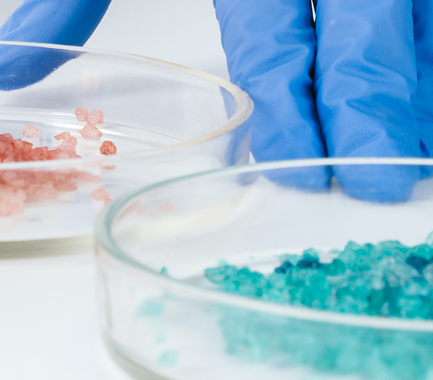Your contact
PENPET-Team - Hamburg

Christoph Meister
Sales
Tel. +49 (0) 40 - 675 7 99 30
sales@penpet.de
Get in touch with us.
Butyl glycol
Butyl glycol is a chemical compound from the group of glycol ethers, which as a surfactant and solvent is of great importance for numerous industrial applications. The substance is produced in large-scale processes primarily by the ethoxylation of n-butanol or the ether-forming reaction of n-butanol with 2-chloroethanol. As a "high production volume chemical", butyl glycol is an important raw material for the chemical industry.
Butyl glycol is used as a solvent for lacquers, paints, coatings, thinners, hair dyes, cosmetics and finishing agents in the textile industry. In the household, the compound is used as a surfactant in detergents and cleaning products, among other things. It is used as a lubricant in industrial and technical fields of application in oil and gas production. Butyl glycol is also used to remove impurities and environmental damage due to its high dissolving power. An ester of the compound with phthalic acid is also used as a plasticizer for the plastic polyvinyl chloride (PVC).
At PENPET you get butyl glycol of the highest quality - from a reliable partner who will also meet your requirements in the long term. We look forward to receiving your inquiry for an individual offer. Prompt delivery can be made in drums, IBC containers of various sizes, and loose in containers or tanker trucks.
CAS no. 111-76-2
EINECS no. 203-905-0
Molecular formula: C6H14O2
Synonyms: Butyl glycol, ethylene glycol monobutyl ether, ethylene glycol butyl ether, butoxyethanol, 1-butoxy-2-hydroxyethane, 2-butoxyethan-1-ol, BG, EGBE
Areas of application: Used as a tenside in detergents and cleaning agents as well as industrial cleaning processes, solvents for paints, varnishes, coatings, thinners, cosmetics and textile finishing agents, lubricants for natural gas and oil extraction processes, intermediate product for the production of plasticizers
More Information
As an ether, butyl glycol consists of two components which are linked by the oxygen atom of the ether group. The structure of the compound is made clear by the alternative name ethylene glycol butyl ether. Butyl glycol is composed of a regular butane group and an ethylene glycol residue that has a terminal hydroxy group. This means that the molecules of the substance have both an electrically polar and an electrically non-polar end, making butyl glycol a suitable solvent for both polar and non-polar compounds and an effective cleaning agent.
Butyl glycol is a colorless liquid with a slight, ethereal odor. The compound has a high temperature resistance. It only solidifies at temperatures below -75 °C and changes into the gaseous state at a temperature of 171 °C.
Butyl glycol is a versatile solvent itself. Conversely, it is fully miscible with both water and many organic solvents. In an aqueous solution containing 79% water, butyl glycol forms an azeotropic mixture that has a common boiling point of 98.8 °C and can therefore no longer be separated by simple distillation.
Butyl glycol can be stored stably when handled as intended. It is particularly important to ensure that all containers are airtight, as the substance gradually converts to peroxides when it comes into contact with atmospheric oxygen. However, this process can be stopped by adding a small amount of butylated hydroxytoluene. Butyl glycol also reacts dangerously with aluminum, strong oxidizing agents and alkalis.
Butyl glycol is flammable but difficult to ignite. The compound is hardly volatile. However, if strongly heated, the vapors of the compound can form an explosive air-vapor mixture with the surrounding air. The combustion and thermal decomposition of butyl glycol produces gases that are hazardous to health, such as carbon monoxide and carbon dioxide.
Butyl glycol poses acute health risks. Care must be taken to ensure safe handling of the substance. Butyl glycol is an irritant to skin and eyes, exposure may cause a burning sensation, pain and redness. Damage to the cornea is usually reversible. Affected parts of the body should be rinsed immediately with sufficient water and any residues of the compound should be removed. In the event of contact with the eye, an ophthalmological examination must be arranged. Inhalation of vapors or aerosols of the substance may cause respiratory irritation, coughing, sneezing and burning pain. Gastrointestinal symptoms such as abdominal pain, diarrhea, vomiting and nausea can occur after swallowing butyl glycol.
